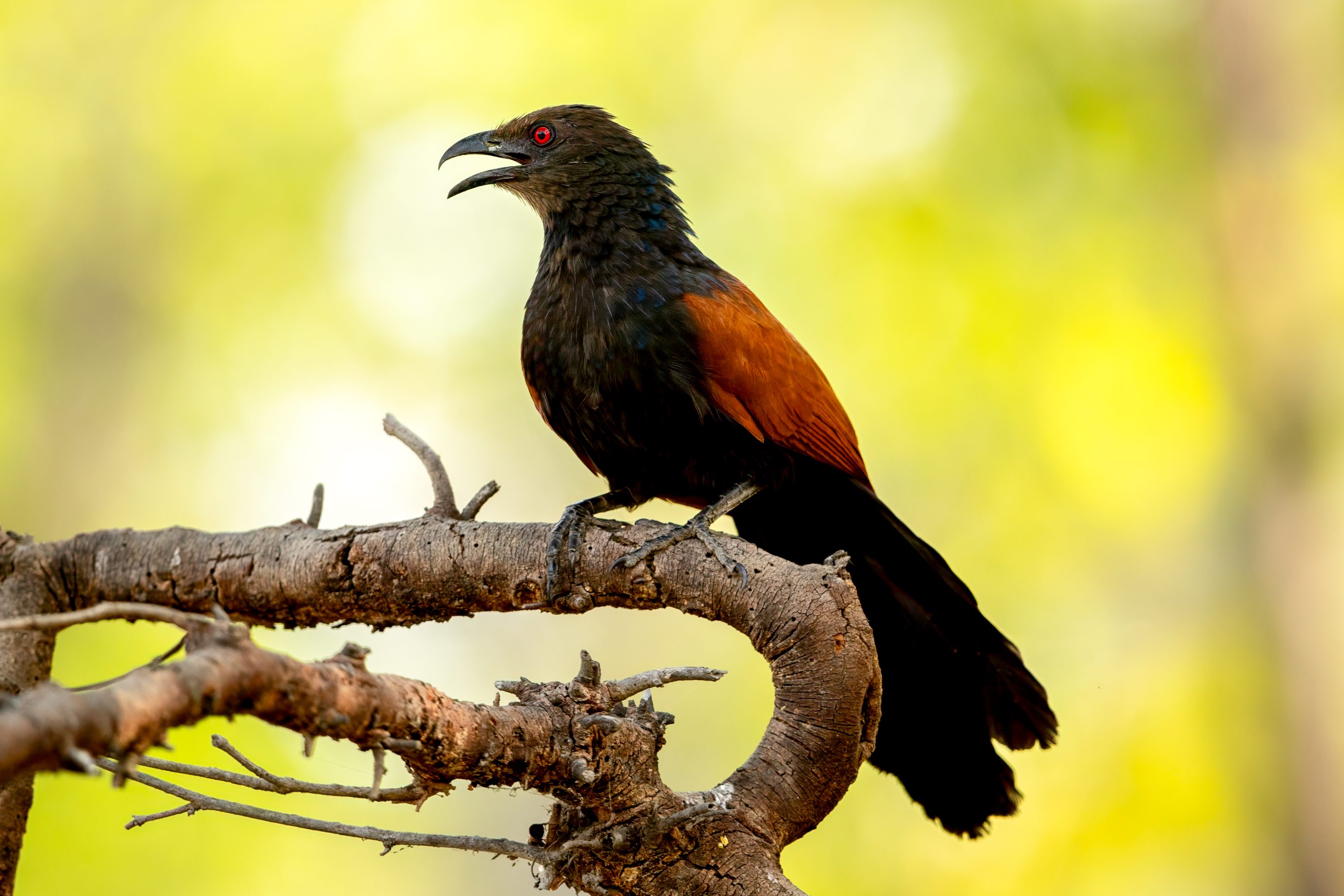Description
The Burchell’s coucal (Centropus burchelli), colloquially known as the rainbird, is a species of cuckoo in southern Africa. It is often considered a subspecies of the white-browed coucal (Centropus superciliosus). It reaches an average length of 36-42 cm (14-16.5 in). It has a white throat and underparts, a black head and neck, chestnut-brown back and wings and a long black tail. Eyes are a deep red. It is famous for its bubbling call, which sounds like pouring water. The name “rainbird” comes from the belief that rain will soon fall after hearing the call of the Burchell’s coucal.
Diet & habitat
The Burchell’s coucal prefers dense vegetation, thickets, rank grass, reedbeds, marshes and forest edges. Any suitable habitat must have yearly rainfall above 600 mm. Apart from the occasional fruit the Burchell’s coucal is predominantly a predator. It will catch and eat various invertebrates, small rodents, birds up to the size of doves and pigeons, reptiles and amphibians. Most of the foraging is done in trees or in bushes. It will also swoop down and catch prey on the ground.
Nesting
The nest is built by the male and is a large deep cup made up of grass and leaves. It is placed in tall grass, reedbeds, thickets, bush, hedges or in a thorny tree, usually 0.5-10 m above ground. The egg-laying season is between September-March in most places. 2-5 eggs are laid and incubated mostly by the female for around 15-16 days. The feet of the chicks develop fast enough for them to move around the bush before they can fly. Chicks usually leave the nest after around 21 days, but will be dependent on the parents for several more weeks.
Status
The Burchell’s coucal is numerous and common within preferred habitats. It is lumped with the white-browed coucal on the IUCN Red List, where they together are listed as least concern. The Burchell’s coucal is not threatened.







